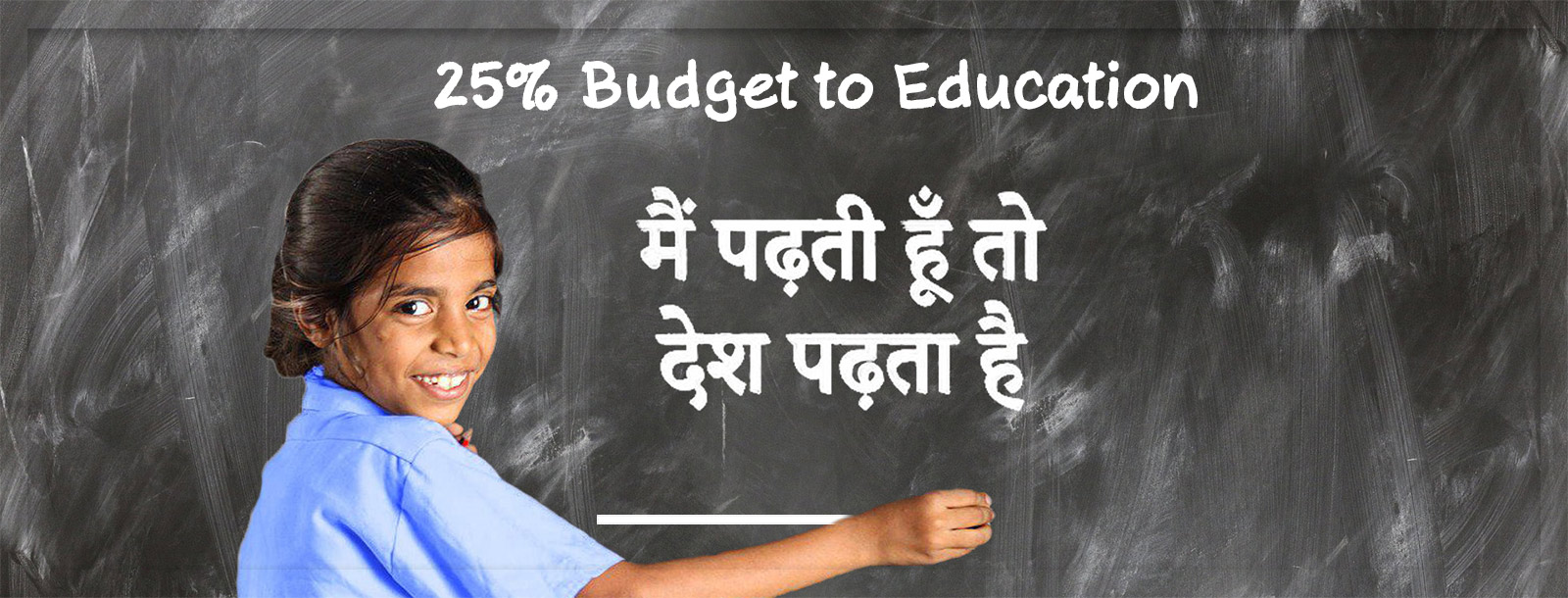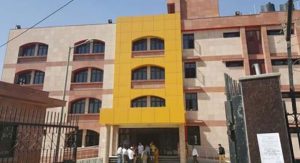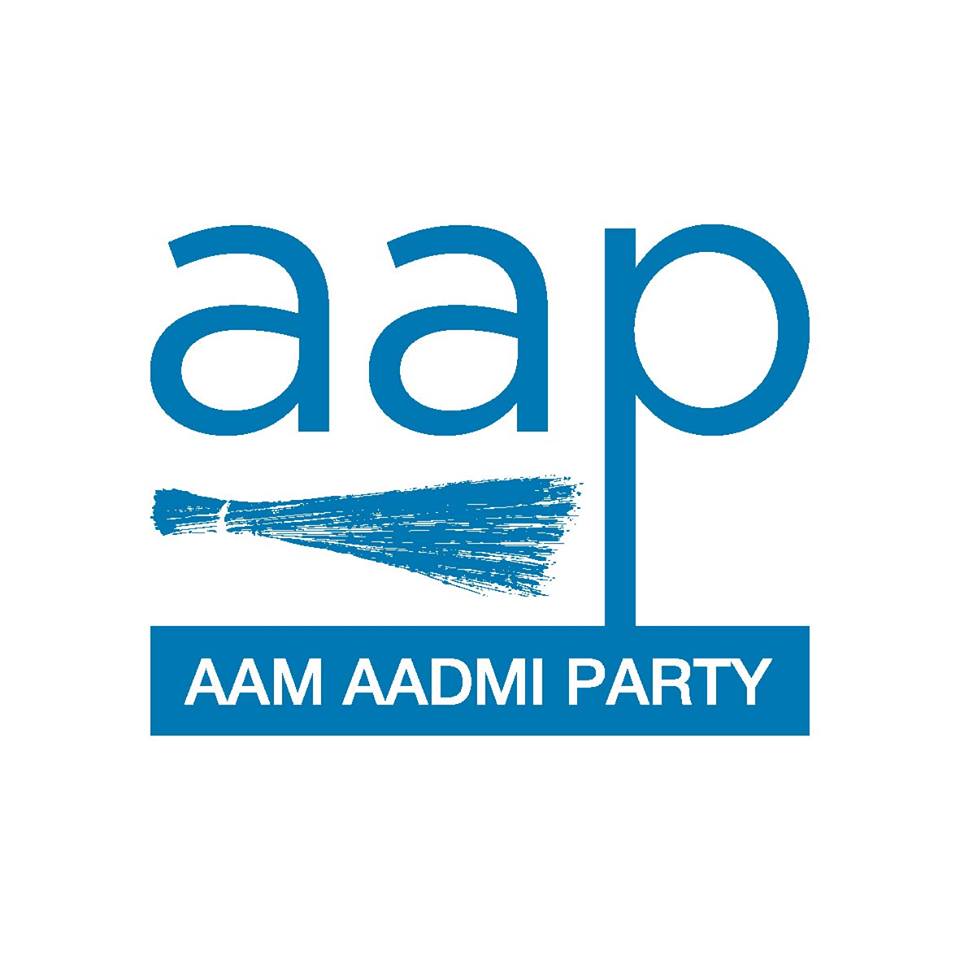
When the Aam Aadmi Party formed the government in Delhi in 2015, we knew we had inherited a public school system that was in shambles. What we did not know was how deep the rot ran. Subject to decades of neglect and intentional subversion by vested interests of politicians with flourishing private school ‘business’, Delhi’s government schools suffered handicaps at all levels – severe shortage of rooms and teachers, low motivation among teachers and principals, and most importantly, abysmal learning levels with 3 out of 4 students in Class 6 unable to even read their books.
Over the last two years, the AAP government has laid a strong foundation for what truly promises to be an ‘Education Revolution’ by undertaking a sustained and systematic effort to rebuild a broken public education system. The first step taken by the government within days of coming to power in 2015 was doubling the allocation for education in the budget. In 2016-17, as per a RBI study of state budgets, Delhi allocated 22.8% of its total budget to education, the highest for any state in India and far above the all India average of 15.6%.
Providing additional funds, however, was only the beginning. AAP’s vision was clear: to provide quality and accessible education to all, regardless of one’s ability to pay. Over the last two years, the government has worked tirelessly on four major fronts to move towards its vision: i) modernising infrastructure, ii) capacity building of school teachers and principals, iii) making school administration accountable, and iv) improving learning outcomes. An understanding of the government’s work on each of these is essential to understand the essence of Delhi’s education revolution.
i) Modernizing infrastructure
Additional classrooms

A newly constructed government school
The increased budget helped the AAP government in urgently addressing the acute shortage of classrooms. Over 8,000 classrooms have been constructed until April 2017, and over 10,000 more classrooms will be constructed over 2017-18. The AAP government has already constructed 21 new schools since coming to power, and will construct more in the years to come. This will solve the infrastructure needs of Delhi’s government schools for the next decade.
Pilot schools

Newly constructed classrooms are aesthetically designed
The government has refurbished entire school buildings of 54 pilot schools, and has begun work to expand this to all schools in a phased manner. The pilot schools have been equipped with smart classrooms that have projectors and screens installed. Modern fibre benches and desk sets have replaced old rickety benches. A fresh coat of paint, and granite coated walls have made the interiors of the school unrecognisable. This is a far cry from the crumbling walls that made the school building only a couple of years back.
Managers: Improved maintenance
The government has appointed Estate Managers in order to relieve the burden of sanitation, upkeep, repair and maintenance of the schools from Principals and teachers. Many of the Estate Managers working in Delhi Government schools are retired military servicemen who wish to continue to serve society. Estate managers use an android app to report their findings which is regularly monitored through customised dashboards by the officials and the Deputy Chief Minister himself. A fixed sanitation staff of four workers, provided with mechanized floor cleaners and other modern equipments, have ensured a drastic improvement in cleanliness levels in schools.
ii) Capacity building of teaching staff and Principals
Teacher Training

A workshop from last year’s teacher training
Teacher training is an activity that the State Council of Education Research and Training (SCERT) had been undertaking since before the AAP government came to power in Delhi. The annual summer training was not followed up with supplementary sessions throughout the year, which resulted in low retention among teachers. From the summer of 2016 onwards, the government substantially altered the model of training. In its first year, this meant that over 20,000 teachers underwent workshops in which they were asked to prepare supplementary material for their subjects. They did so in groups of 4-6 teachers, under the supervision of facilitators, which resulted in a peer-based learning experience for the teachers. In 2017 as well, over 45,000 teachers will undergo a similar training workshop over the summer.
School Leadership Development

Delhi government school principals at Cambridge University
The Principal Leadership Development Program was launched in 2016, wherein groups of ten Principals assisted by facilitators meet once every month to engage in a dialogue on the challenges of being a school leader and jointly working out ways of dealing with them. A batch of thirty Principals completed a course in school leadership at Cambridge University in 2016. The first batch of Principals has begun a course at Indian Institute of Management – Ahmedabad. The competencies that the course will work on are: making School Development Plans, setting quantitative and qualitative goals, budgeting, ascertaining human resource requirements, etc. The idea is to build a cadre of high performing school leaders, because the Principal is the pillar of a school.
iii) Making school administration accountable

Deputy CM Manish Sisodia inspecting a school
Government schools across the country have been notorious for lacking discipline or seriousness when it comes to running the school. In Delhi, to overcome a systemic inertia, the AAP government has introduced three levels of oversight and supervision. The Education Minister himself inspects schools on a regular basis. The surprise inspections have resulted in some senior officials including Principals, being suspended for corruption and purposeful negligence in administration. The knowledge that the Minister could turn up at any school without notice has forced some to shed their customary lethargy. District officials of the Directorate of Education (DoE) have also been monitoring and tracking management of schools that come under their districts. The third and most important level of monitoring has been through a strong network of School Management Committees.
School Management Committees
School Management Committees or SMCs are mandated under the Right to Education Act 2009. An SMC is a body consisting of parents and teachers of a school, which is supposed to monitor and assist in the affairs of the school. Before September 2015, SMCs either didn’t exist or were defunct. The government, with the help of civil society mobilized parents to participate in these elections. On September 5, 2015 elections were conducted for the first time all the 1023 schools run by the Delhi government.
SMCs consist of members who live in the vicinity of the school. They are therefore able to visit and monitor the functioning of the school on a regular basis. They feel a sense of ownership in this process, because their work as SMC members directly impacts the quality of education their own children have access to.
The true purpose of SMCs is to bridge the huge gap that exists between the government, the school and the community. By making parents take active ownership of education in schools, holding public servants accountable to the citizenry and by opening up the school to the community, the Delhi model of SMCs has been extremely successful. The model is not only strong in terms of its foundation being on genuine election of parent members, but also in successfully creating a strong sense of ownership and willingness in the community to participate in the education of its children (which also makes it a difficult idea to be abandoned by any party in power). However, the best aspect of this model is that it is not one which derives its strength just from its theoretical soundness like many policy models in India do — it draws its legitimacy from its effectiveness in practice on the ground.
Mega PTM

Parents meeting their child’s teacher
Mega Parent Teacher Meetings (PTMs) are another way in which the government has involved parents in the education of their children. The first such PT was held in July, 2016, during which thousands of parents entered their children’s schools for the first time. PTMs have been a common practice in top private schools for many years, but have mostly existed on paper in government schools. This practice has since become a regular feature in all government schools.
iv) Improving Learning Outcomes
Every Child Can Read campaign

A teacher conducts a fun activity during the Reading hour
The majority of Delhi government schools are senior secondary schools, functioning from Classes 6 to 12. Children who enter Class 6 for the first time from an MCD school have serious learning deficiencies, which reflected for two consecutive years in a Baseline assessment conducted by the government. In 2016, 74% of all Class 6 students could not read their grade-level textbooks.
On 5th September, 2016, the government launched the ‘Every Child Can Read’ campaign. A systematic effort toward teaching children to read was carried out in every government school, and the results were very encouraging.
-
Over a period of 8 weeks, more than one lakh children across Delhi moved from being non-readers to readers. Most of these children were first generation school goers.
-
Over 1000 Reading Melas were held across the capital where community members (young and old) volunteered to help children with reading on weekends.
-
A visible change in classroom environment was perceived with innovative teaching replacing ‘chalk and talk’. Several teachers voluntarily adopted a small bunch of non-reader children to provide them personalised support in being able to read.
Mentor Teacher Program
The longer term aim of the government is to build capacities of teachers and provide support to them by exposing them to new teaching learning methodologies and pedagogy. The Mentor Teacher Program has played an instrumental role in providing academic support to teachers.
Mentor Teachers are a cadre of 200 talented, dynamic and experienced teachers, who have been allocated 5 to 6 schools each. Their role has been to provide academic support to teachers in the schools allotted to them. Over the past year, Mentor Teachers have become the bedrock on which the most important and successful programs of the Delhi Government have been built.
Pragati – Supplementary Learning Material
A consequence of the poor learning levels in government schools has been that children are unable to read the NCERT textbooks prescribed for them. It is difficult for teachers to teach the syllabus in such circumstances. A group of mentor teachers developed the ‘Pragati’ supplementary material for teachers to use in the classroom, to overcome the problem children face due to their inability to read.
The Mentors discussed at length ways to make the lessons interactive through activity based learning and innovative learning exercises, and compiled them in the form of ‘Pragati’ material for all subjects for Classes 6 to 8.
Chunauti 2018
Perhaps the most important intervention of the government has been the ‘Chunauti 2018’ reforms. These reforms are aimed at reducing the dropout rate by taking special measures for each student so that no one is abandoned by the system. Children from Classes 6 to 9 are organized into two groups Nishtha and Pratibha, according to the learning level of the children.
Nishtha teachers focus on building reading, writing and basic math competency and those in Pratibha will carry on with their regular syllabus. The grouping helps teachers to address the needs of children. In addition to these two groups, Vishwas group has been formed for the students who are unable to clear Class 9 exams. They are provided with the option of appearing for Class 10 examination via the Modified Patrachar Scheme of the CBSE.
Transparency in governance
More than 30,000 children in 2016 and 31,000 in 2017, were admitted into private schools under the Economically Weaker Section (EWS) quota as mandated under the RTE act. Earlier, the entire process used to be conducted in a non-transparent manner which allowed nepotism and corruption to flourish. The AAP government changed rules of admission so that only a transparent online draw could decide who got admission.
In 2017, the admission process for Classes 6 and 9 was made fully online. Gradually the entire admissions process will be made online in the years to come.
In conclusion, it can be said that the Delhi Education Revolution is a worthy dream that is a work in progress. The entire might of our young party is driving this change in different ways. In two years, we have achieved what no other party or government has even aspired to achieve. The enormity of the crisis we face when it comes to educating our children is so massive, that despite all our efforts, we still have a long way to go. The major challenge that lies ahead of us is to institutionalise the drive, motivation and vision that the AAP’s leadership has set out with, so as to ensure that this revolution outlasts all of us.
This journey of fixing public education has only just begun, and we hope to take it to the rest of the country in the years to come.
Atishi Marlena is a senior leader of Aam Aadmi Party and an Advisor to the Deputy Chief Minister of Delhi.
This journey of fixing public education has only just begun, and we hope to take it to the rest of the country in the years to come.
Atishi Marlena is a senior leader of Aam Aadmi Party and an Advisor to the Deputy Chief Minister of Delhi.


4 Comments